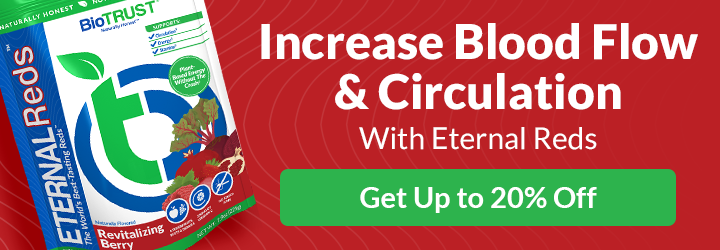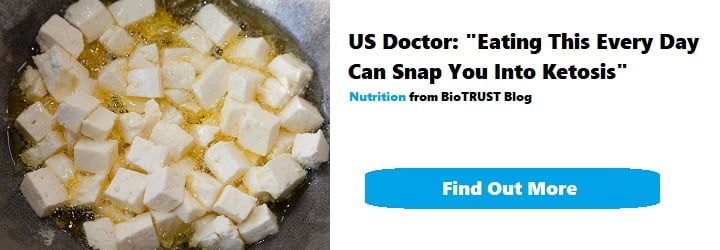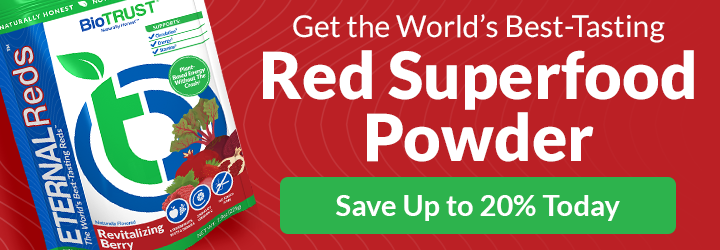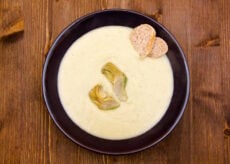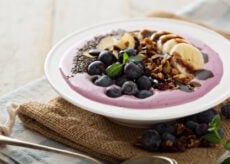11 Foods That Increase Blood Flow & Circulation
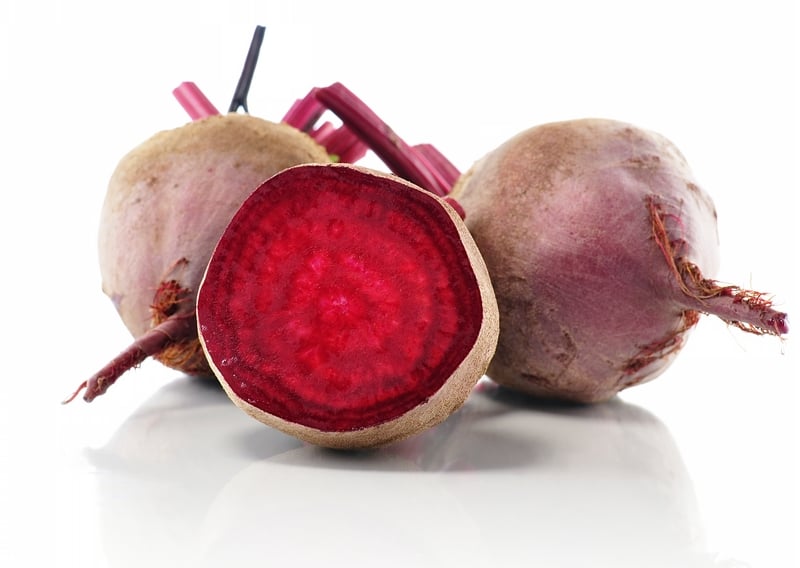
On an average day, a healthy circulatory system transports roughly 2,000 gallons of blood through its 60,000-ish miles of blood vessels. That’s absolutely remarkable. Yet, while many view the circulatory system—aka the cardiovascular system—as a highway-and-road system designed to transport blood, it is far more complex and nuanced. It is vital for good health and has obvious life-or-death implications.
In today’s article about blood flow & circulation, we will cover:
- What is the Circulatory System?
- Warning Signs of a Poor Circulatory System
- Ways to Get the Blood Pumping
- Top Diets for Blood Circulation
- Foods That Boost Circulation
What is the Circulatory System?
In its most basic sense, the circulatory system, which is a vast, closed network of organs and vessels, moves blood around the body. To that end, it is responsible for delivering oxygen, nutrients, hormones, and immune factors to tissues and cells. It also carries away waste products (like carbon dioxide).
This is a system we should all care about deeply. When things go awry, it can lead to serious, life-threatening consequences. Without an efficient circulatory system, which includes the heart, lungs, arteries, veins, and blood vessels, our bodies are left unable to maintain a stable environment or fight off disease.
In fact, according to the American Heart Association, cardiovascular disease is the leading cause of death in the U.S. Over 92 million Americans suffer from cardiovascular disease—many of them completely unaware of it. It’s estimated that by 2035, more than 130 million American adults—that’s a whopping 45%—are projected to have some form of cardiovascular disease.
When the circulatory system is working as it should, you probably don’t think twice about it. Blood is flowing freely and efficiently, your cells are getting the oxygen, nutrients, and hormones they need, and metabolic waste is being cleaned up.
Warning Signs of a Poor Circulatory System
It’s when things aren’t running so smoothly that most of us take notice. Not surprisingly, when circulation issues arise—that is, some degree of poor, insufficient blood flow—problems ensue.
Given the gravity of the circulatory system, these problems can obviously become very serious—life-threatening, in fact. Here are some common warning signs of poor circulation to watch for:
- Cold hands or feet
- Numb or “pins and needles” feelings in hands or feet
- Blue color in the legs, toes, and/or fingers
- Difficulty getting or keeping an erection
- Slower wound healing
- Swollen feet or ankles
- Spider/varicose veins
- Muscle cramping and/or discomfort
- Fatigue and lackluster energy levels
- Lack of stamina
Keep in mind that some of these signs may be multi-factorial. In other words, poor circulation may not be the only cause, and it may not be a factor at all.
Of course, there are much more severe consequences of poor circulation, including cardiovascular disease and death. In other words, signs of poor circulation should not be taken lightly. If you notice or suspect you have signs of poor circulation, it’s imperative you schedule a visit with the appropriate member of your healthcare team.
Ways to Get the Blood Pumping
Ever wonder why aerobic exercise is often called “cardio?” It’s good for your cardiovascular system, of course! According to the Cleveland Clinic (and virtually every other credible health organization), “Regular exercise is the single most important key to heart health. And it is FREE.” 1
Generally speaking, higher levels of fitness equal better cardiovascular health. The traditional recommendation is to accumulate 30 minutes of aerobic activity daily (150 minutes/week). In addition to physical activity, stretching (particularly static stretching) increases arterial flexibility, which contributes to improved circulation. 2
Increasing overall physical activity is another linchpin for boosting circulation. Given the many benefits of walking, such as improving circulation and glycemic variability, I prefer the more complete message of “walk more, sit less, and exercise.” 3
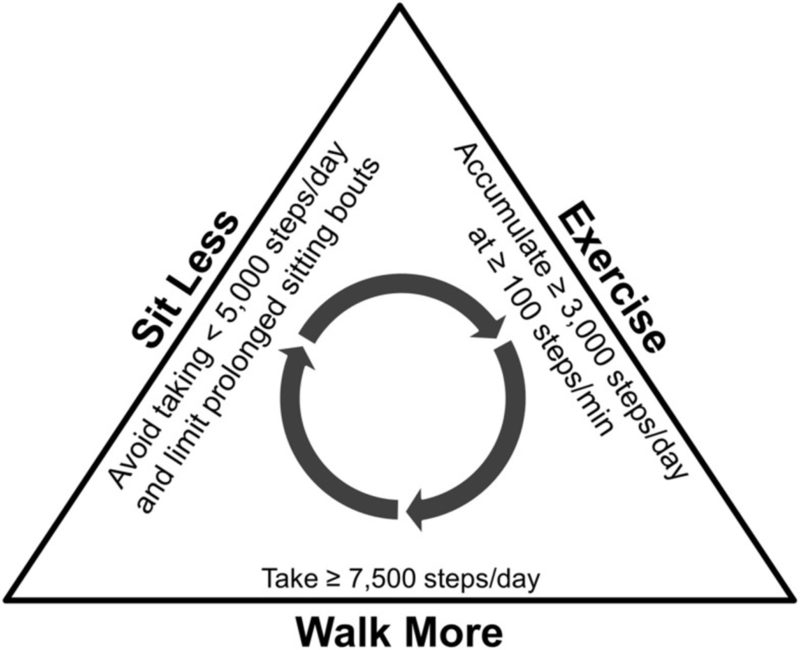
Considering the far-reaching effects of sleep (which plays a vital role in good health and well-being), it may come as little surprise that inadequate sleep can have severe consequences on the circulatory system.
Stress can also both directly and indirectly influence the function of the circulatory system. Along those lines, yoga, meditation, deep breathing exercises, and forest bathing (i.e., taking a walk outdoors in nature) are all effective stress-management techniques.
One of the most overlooked ways to boost circulation is hitting the sauna. Believe it or not, several of the benefits of frequent sauna bathing parallel those adaptations to regular aerobic exercise, opening the gates to better circulation. 4
Compression socks have long been deemed an effective strategy to improve circulation. 5 Basically, compression socks act like a muscle that helps push blood (and lymph) from the lower extremities back to the heart.
Top Diets for Circulation
When it comes to diet, there’s an ongoing debate about which is the most heart healthy. At this stage in the game, a Mediterranean-style diet seems to be leading the pack. This shouldn’t come as too much of a surprise considering this pattern of eating is loaded with circulation-friendly nutrients and heart-healthy foods. It includes extra virgin olive oil, dark leafy greens and other vegetables, fresh fruits, legumes, whole grains, nuts, seeds, oily fish, and even red wine, many of which will be covered below.
A recent study comparing a Mediterranean-style diet to a plant-based (vegan) diet found that while both led to improved markers of heart health, a Mediterranean diet led to more pronounced improvements in circulation (such as increases in vasodilation and nitric oxide bioavailability). 6 In everyday life, consuming primarily whole foods (with a heavy emphasis on plant-based foods) is a pretty safe bet for most people.
Top Foods to Boost Circulation
When it comes to promoting healthy circulation and “young blood,” there are quite a few circulation-friendly nutrients and foods, many of which, believe it or not, are red. As simple as it sounds, this may be tied to the “Doctrine of Signatures,” a thought-by-association concept that has been around for eons and holds that features of plants resemble, in some way, the area of the body it can help. More simply put, “like supports like.”
You see, polyphenols (the powerful phytonutrients that give plants their vibrant colors) provide powerful antioxidant support, which may help combat unhealthy oxidative stress that may result from excessive reactive oxygen species (e.g., free radicals). Along these lines, polyphenols can help support healthy nitric oxide production, circulation (i.e., blood flow), and energy levels.
Further, recent research suggests that polyphenols may be a significant contributor to the overall health and longevity benefits associated with the world’s healthiest diets (e.g., Mediterranean diet) and higher intakes of fruits and vegetables. With all that being said, it may not come as much of a surprise that the best foods that boost circulation include:
• Beets, which may be the most well-known circulation superfood, are a rich source of phytochemicals (e.g., polyphenols) and other bioactive compounds (e.g., inorganic nitrate), which provide powerful support for healthy levels of nitric oxide (which acts as a “vasodilator,” meaning it opens up blood vessels), circulation (including blood flow to the brain), mental and physical energy levels, and more.
• Apples are rich in polyphenols called flavonoids, which can be especially important for supporting healthy circulation, such as by promoting the production of nitric oxide. These flavonoids may support the activity of nitric oxide synthase (eNOS), an enzyme that serves as a nitric oxide booster. eNOS has been referred to as a “major weapon” in the fight against poor circulation.
• Known as “The Jewel of Autumn,” pomegranates are chockful of polyphenols, namely ellagitannins and punicalagins, which are unique to the pomegranate. These polyphenols contribute to the pomegranate’s reputation as a circulation superfood, as they help support healthy nitric oxide levels and healthy endothelial cell function (endothelial cells line the blood vessels).
• Other fruits and berries, including grapes, cranberries, blueberries, raspberries, and strawberries, are naturally high in polyphenol and antioxidant compounds, including anthocyanins, proanthocyanins, flavanols, stilbenes, and phenolic acids, which provide powerful support for healthy nitric oxide levels, healthy vascular function, healthy blood flow, and more.
In addition to those (and other) “red” fruits, vegetables, and superfoods, here are several other foods that may help boost circulation:
• When it comes to healthy nutrition, it’s really hard to go wrong by eating lots of fresh, colorful vegetables and fruits. Take leafy greens like spinach and kale, for example. They provide the fat-soluble vitamin E, which has been shown to help increase blood flow by dilating blood vessels. Other terrific sources of vitamin E include sunflower seeds, pumpkin seeds, and olives. Green leafy vegetables are also a great source of vitamin K, which is important for blood clotting and to help support healthy, flexible arteries.
• Citrus fruits—like oranges, grapefruits, lemons, and limes—aren’t just juicy and refreshing; they’re believed to be “natural blood thinners.” They may also help strengthen capillary walls and help prevent plaque buildup, effects attributed to their high vitamin C content, which assists in dilation and blood flow. Other foods high in vitamin C, like Brussels sprouts, bell peppers, pineapple, strawberries, broccoli, and many more, may also be beneficial.
• Nuts are loaded with a wide variety of nutrients, including vitamins that are great for improving circulation. Rich sources of vitamin E, omega-3 fats, magnesium, and l-arginine, nuts may help the blood vessels dilate and again increase blood flow. Most tree nuts are rich in the monounsaturated fat oleic acid, which is the very same “heart healthy” fat that makes olive oil so popular.
• Want to stimulate blood flow and promote healthy levels of inflammation? Omega-3 fatty acids—particularly, EPA and DHA—might be one of your best weapons. In addition to nuts and seeds, they can be found in wild-caught, cold-water fish like wild salmon, Pacific sardines, Atlantic mackerel, rainbow trout, anchovies, and herring as well as grass-fed meats.
• Flavorful and aromatic, garlic is another nutrient-rich food that can help improve circulation, thanks in large part to its unique phytochemicals (such as allicin) that have antioxidant and anti-inflammatory properties. Like citrus fruits, garlic helps by preventing plaque from building up and clogging arteries. Garlic has also been linked to lowering blood pressure and cholesterol, which may come back to the ability of garlic phytochemicals to inhibit key enzymes. It’s not the only food in this category that helps improve circulation; onions, leeks, and even radishes are worth keeping in your kitchen.
• If we’re talking about red circulation superfoods, we can’t forget about tomatoes, which get their fabulous ruby red color from lycopene, a natural antioxidant linked to improving circulation. Another lycopene-rich food to reach for is watermelon, which also contains l-citrulline, an amino acid that gets converted in the body to arginine, a precursor to the all-important circulation booster nitric oxide.
• Go ahead and kick up the spices in your food. From cayenne pepper to ginger to turmeric, you’ll find they not only add lots of flavor but tons of nutrition to boot. Peppers, for example, can help strengthen blood vessels and arteries. Ginger is also known to support healthy circulation, and studies show turmeric is another circulation-supporting spice, thanks in large part to curcumin—turmeric’s active ingredient that has been shown to enhance the function of the blood vessels making up the circulatory system.
Of course, this discussion about foods that boost circulation isn’t complete without its corollary: what you don’t eat. You see, on the other side of the heart-healthy omega-3 fatty acids (which have anti-inflammatory and vasodilatory properties) are omega-6 fatty acids, which promote blood clotting and are pro-inflammatory.
Overconsumption of omega-6 fatty acids can lead to increases in blood viscosity and vasoconstriction. 7 In other words, diets high in omega-6 fats are likely to be a contributor to poor circulation.
If you want to avoid the signs of poor circulation, then you’ll also want to make sure you limit your consumption of refined carbohydrates, like added sugar and refined grains. After all, overconsuming processed foods made with refined carbohydrates is a surefire recipe to poor glycemic control and poor glycemic variability, which can put you on the fast track to circulation problems. 8,9
Feel the Flow
While many of the signs of poor circulation are tolerable, they shouldn’t be taken lightly. They could be a premonition of worse things to come. As always, if you notice or suspect you have any signs of poor circulation, it’s imperative you schedule a visit with your healthcare team, and work with them to nip the common poor health habits in the bud and implement the strategies mentioned above to likely begin boosting circulation and supporting the cardiovascular system.



